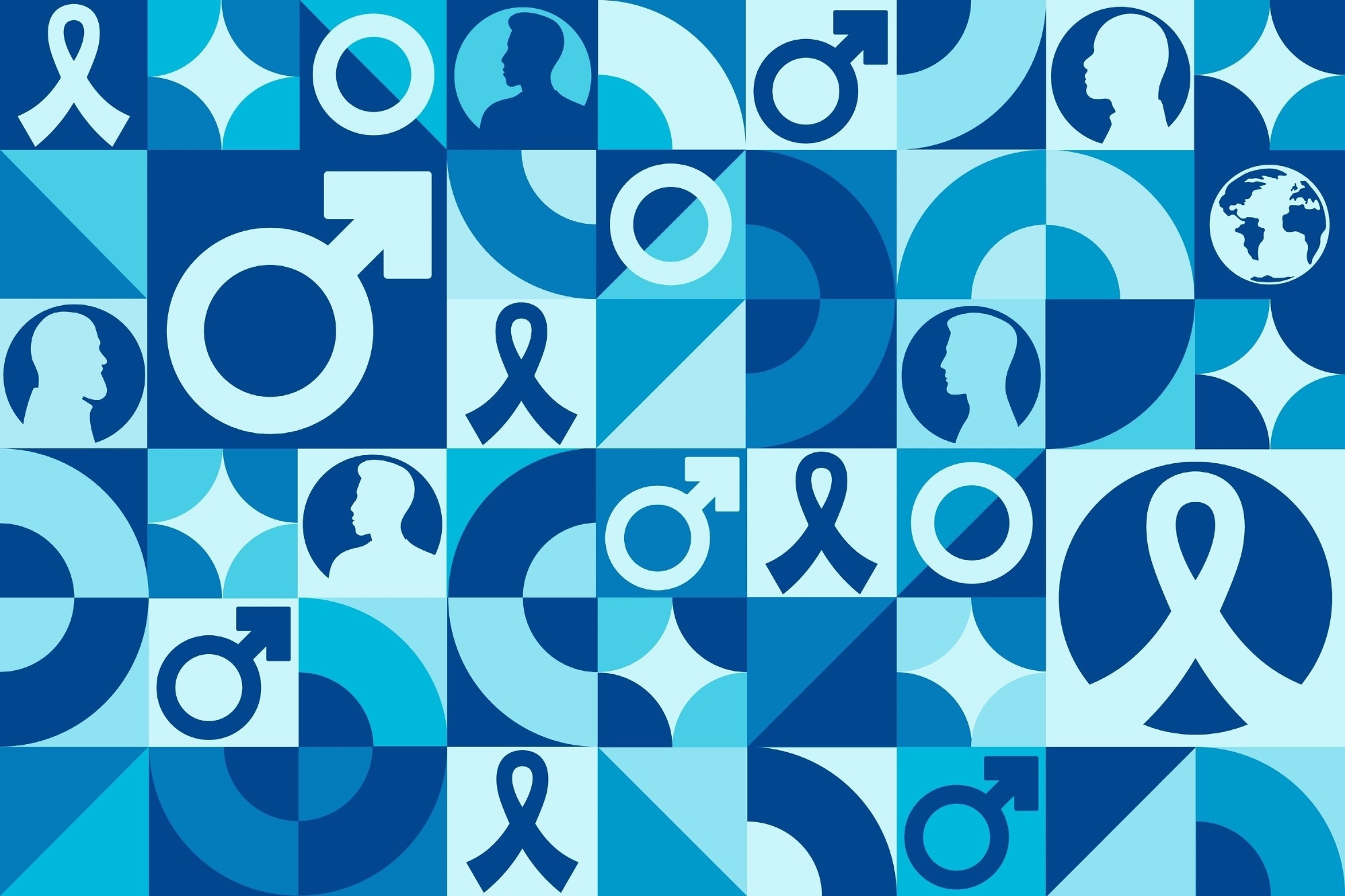Introduction
Why is it important to prioritize men's health?
Key components of men's health
Lifestyle factors impacting men's health
References
Further reading
The term ‘men's health' refers to both physical and mental health complications that are specifically concerning for men.

Image Credit: Bulgn/Shutterstock.com
Introduction
Men have three to four years shorter life expectancy than women and are twice as likely as women to experience premature death due to cardiovascular disease, liver disease, lung cancer, and accidents. Suicide rates are also significantly higher among men.1
A range of physiological, psychological, social, or environmental factors can particularly impact men's health. These factors need to be addressed through appropriate interventions to improve men's health and well-being at both individual and population levels.2
Men face a range of social and environmental challenges in their lifetime, including masculinity and male socialization-related stress, lifestyle behaviors, and socioeconomic pressure.
Besides biomedical challenges, these factors collectively contribute to health inequalities between men from different socio-economic and cultural backgrounds.2
According to the Men's Health Forum, England, men's health issues should be recognized at the broadest policy level, including social care policy, education policy, work environment policy, transport policy, and prison services, among others.2
Why is it important to prioritize men's health?
Despite the existence of major health inequalities between men and women, only a handful of approaches have been developed and implemented to address them. Considering the magnitude of preventable illnesses and mortality rates among men, it has become an absolute necessity to investigate and address men's health issues, including inequalities.1
Men are more likely to opt for certain lifestyle behaviors than women, such as smoking, drinking alcohol, and risky life choices. These factors make men more susceptible to diseases that can otherwise affect anyone.3
Another crucial factor affecting men's health is their infrequent use of healthcare services. Men are less likely to visit family physicians for health checkups and health screening than women. Such delay in seeking medical attention often leads to reduced treatment options and treatment duration, which in turn makes men more susceptible to unnecessary disabilities or premature death.2

Image Credit: Chinnapong/Shutterstock.com
According to the U.S. Centers for Disease Control and Prevention (CDC), about 14% of adult men exhibit fair or poor health status in the United States, with 41% and 50% living with obesity and hypertension, respectively. According to the 2022 report, mortality rates in the US are 1,040 deaths per 100,000 population for men and 928 deaths per 100,000 population for women. 4
Key components of men's health
Men are at higher risk for developing certain diseases than women, including cardiovascular disease, diabetes, alcohol-related diseases, and mental health disorders. They also experience unique health issues, including prostate and reproductive health diseases.
Non-communicable disease risk
It has been estimated that about 9.6 million and 8.9 million cardiovascular disease-related deaths occur in men and women worldwide, respectively 5. About 77 million more men than women have been estimated to have type 2 diabetes worldwide .6
Alcohol-related disease risk
According to a CDC report, men are significantly more likely to drink excessive alcohol than women (58% men vs. 49% women). They are more likely to experience alcohol use disorder than women (13% men vs. 9% women).7
Excessive alcohol drinking puts men at higher risk of developing oral, liver, colon, and prostate cancers. It also increases the risks of reproductive health disorders, hospitalization, and fatal road accidents in men.7
Mental health disorder risk
Men are less likely than women to receive mental health diagnoses or treatment, which is partly due to the stigma associated with masculinity. Nearly one in ten men suffer from depression, anxiety, and other emotional distress, but less than half of them seek medical attention 8.
Men are 4 times more likely to die by suicide than women, which could be due to the fact that men act more impulsively on suicidal thoughts and show fewer warning signs, such as talking about suicide.8
Read more about Male Mental Health
Prostate disease risk
The most common prostate complications in men are chronic and bacterial prostatitis (inflammation or swelling of the prostate), benign prostatic hyperplasia (prostate enlargement), and prostate cancer.9
Benign prostatic hyperplasia is the most commonly diagnosed urological problem in older men worldwide. The age-specific prevalence of the disease has been estimated to be 8% in the fourth decade of life, 50% in the sixth decade of life, and 80% in the ninth decade of life.10
Prostate cancer is the second most commonly diagnosed cancer and the fifth leading cause of cancer-related death in men worldwide. An estimated 1,414,000 new prostate cancer cases and 375,304 deaths have been observed globally in 2020.11
Reproductive disease risk
The prevalence of male infertility has increased by 77% globally since 1990. Recent evidence indicates that male factors alone are responsible for approximately 20 – 30% of all infertility cases and that about 50% of couples experience infertility due to male factors.12
The prevalence of various male reproductive problems, including erectile dysfunction, low sperm count, testosterone imbalance, and testicular cancer, has been found to increase at a rate of 1% per year in Western countries. About 50% reduction in sperm count has been observed in just 40 years.13
Lifestyle factors impacting men's health
Most of the men's health complications can be prevented by adopting a healthy lifestyle, including a healthy and balanced diet, regular physical activity, stress reduction, sleep improvement, and cessation of smoking, alcohol intake, and illicit substance intake. 14
A plant-based, whole-food diet has been found to improve reproductive health and fertility in young men. Regular physical activities have been found to reduce the risks of cardiovascular and metabolic diseases, obesity, hyperlipidemia, and reproductive health complications. 14
Various stress management interventions have shown promising outcomes, including improvement of mental health and wellbeing, reduction of blood pressure, and lower risk of binge eating and drinking problems. Good quality sleep has been found to improve metabolic, immune, and neuropsychological functions. 14
References
1. Inequalities In Men's Health: Why Are They Not Being Addressed? The King's Fund. Accessed August 9, 2024. https://www.kingsfund.org.uk/insight-and-analysis/blogs/inequalities-mens-health-why-are-they-not-being-addressed
2. Men's Health - an overview | ScienceDirect Topics. Accessed August 9, 2024. https://www.sciencedirect.com/topics/medicine-and-dentistry/mens-health
3. Men's Health. Harvard Health. Accessed August 9, 2024. https://www.health.harvard.edu/topics/mens-health
4. FastStats. June 20, 2024. Accessed August 10, 2024. https://www.cdc.gov/nchs/fastats/mens-health.htm
5. Murray CJL. The Global Burden of Disease Study at 30 years. Nat Med. 2022;28(10):2019-2026. doi:10.1038/s41591-022-01990-1
6. Kautzky-Willer A, Leutner M, Harreiter J. Sex differences in type 2 diabetes. Diabetologia. 2023;66(6):986-1002. doi:10.1007/s00125-023-05891-x
7. Excessive Alcohol Use and Risks to Men's Health | CDC. April 23, 2024. Accessed August 10, 2024. https://www.cdc.gov/alcohol/fact-sheets/mens-health.htm
8. Men's Mental Health | Anxiety and Depression Association of America, ADAA. Accessed August 10, 2024. https://adaa.org/find-help/by-demographics/mens-mental-health
9. Prostate Problems - NIDDK. National Institute of Diabetes and Digestive and Kidney Diseases. Accessed August 10, 2024. https://www.niddk.nih.gov/health-information/urologic-diseases/prostate-problems
10. Awedew AF, Han H, Abbasi B, et al. The global, regional, and national burden of benign prostatic hyperplasia in 204 countries and territories from 2000 to 2019: a systematic analysis for the Global Burden of Disease Study 2019. Lancet Healthy Longev. 2022;3(11):e754-e776. doi:10.1016/S2666-7568(22)00213-6
11. Wang L, Lu B, He M, Wang Y, Wang Z, Du L. Prostate Cancer Incidence and Mortality: Global Status and Temporal Trends in 89 Countries From 2000 to 2019. Front Public Health. 2022;10. doi:10.3389/fpubh.2022.811044
12. Huang B, Wang Z, Kong Y, Jin M, Ma L. Global, regional and national burden of male infertility in 204 countries and territories between 1990 and 2019: an analysis of global burden of disease study. BMC Public Health. 2023;23:2195. doi:10.1186/s12889-023-16793-3
13. Colino SHS Stacey. Reproductive Problems in Both Men and Women Are Rising at an Alarming Rate. Scientific American. June 1, 2021. Accessed August 10, 2024. https://www.scientificamerican.com/article/reproductive-problems-in-both-men-and-women-are-rising-at-an-alarming-rate/
14. Men, Health, Life Expectancy, and Healthy Changes | Lifespan. Accessed August 10, 2024. https://www.lifespan.org/lifespan-living/men-health-life-expectancy-and-healthy-changes
Further Reading
Last Updated: Aug 29, 2024